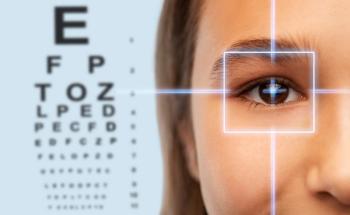
No additional benefit from atropine to stop axial lengthening
No effect when used with orthokeratology lenses for 2 years.
Dr Zhi Chen and coauthors from the Department of Ophthalmology and Visual Science, Fudan University Eye Ear Nose and Throat Hospital, Shanghai, China, reported that adding atropine therapy for 2 years in patients who wore orthokeratology lenses did not result in a more positive effect on stopping axial length elongation compared with the use of orthokeratology lenses alone.
The investigators reached this conclusion after a retrospective analysis1 of the axial length status of 73 eyes of 73 patients who wore orthokeratology lenses for 3 years.
During the first year in which the patients wore the lenses, the axial elongation was 0.30 mm or more in all patients.
At this time, the patients were divided into 2 groups; 37 were treated with the lenses and atropine at a dose of 0.01% instilled nightly and 36 continued with the lenses alone. The patients continued with these treatments for 2 years.
The researchers compared the axial elongation over time in both groups.
Comparison of the groups
The authors found that in the group treated with lenses and atropine, the respective mean axial elongation values were0.47 ± 0.15, 0.21 ± 0.15, and 0.23 ± 0.13 mm during years 1, 2, and 3; the respective values in the lens-alone group were 0.41 ± 0.09, 0.30 ± 0.11 and 0.20 ± 0.13 mm.
The cumulative axial elongation over 3 years for both groups were virtually the same and that the overall change in the axial length did not differ significantly (P = 0.262) between the groups.
The researchers also found that the baseline myopic refractive error had a significant (P < 0.001) impact on axial elongation over the 3 years. The baseline parameters, age, lens design and treatment did not significantly impact the axial length elongation.
The authors concluded that atropine 0.01% instillation in patients with rapid progression of myopia and poor responders to orthokeratology lens use did not significantly change the 3-year axial elongation outcome when compared with use of orthokeratology lenses alone.
Reference
1. Chen Z, Zhou J, Xue F, Qu X, Zhou X. Two-year add-on effect of using low concentration atropine in poor responders of orthokeratology in myopic children. Br J Ophthalmol. Published online July 21, 2022; http://dx.doi.org/10.1136/bjophthalmol-2020-317980
Newsletter
Get the essential updates shaping the future of pharma manufacturing and compliance—subscribe today to Pharmaceutical Technology and never miss a breakthrough.












































